Additional notes (click to expand)
Horticulture
The Maidenhair tree is an upright, columnar tree with furrowed, dull grey bark. Flat, fan-shape, mid-to yellow green leaves, to 12cm (5in) across, are tapered into the stalks and usually lobed at the tips. Long shoots bear alternate leaves, while woody spur shoots bear densely clustered leaves and flowers. Catkin-like, pendulous, cylindrical yellow male flowers, 8cm (3in) long, are borne in clusters. Round, solitary female flowers produce plum-like, yellow-green fruit, 3cm long, in autumn.
Grow in any fertile, well-drained soil in full sun. To propagate, so seed in containers in an open frame as soon as ripe, or take semi-ripe cuttings in summer. Graft in winter. Pest and disease trouble free.
Brickell, C. (2003). A-Z Encyclopedia of Garden Plants. Dorling Kindersley. p.481
Medicinal
Traditional Herbal Medicine Registration (THMR).
While traditional Chinese and other Asian medicines have used the kernels and roots of the Ginkgo for many centuries, modern Western research has focused almost entirely on the leaf, which has been shown to have highly beneficial effects on the brain and improve a wide range of cerebral functions. In order to become therapeutically effective, however, the leaves must be rendered into a contracted extract for medicinal use. Reid states that simple decoctions of the leaves are not sufficiently potent to deliver results.
Ginkgo leaf increases circulation to the brain and can be used to treat cerebrovascular insufficiency; migraine; vertigo and memory impairment. It has been shown to be an effective free-radical scavenger, with particular affinity for the central nervous system, and thus it protects the brain and nerve cells from destruction by free radicals and from premature aging. It also inhibits blood-platelet aggregation, providing a stong measure of protection against stroke and coronary thrombosis. Ginkgo leaf has been shown to significantly increase the sythesis of dopamine, norepinephrine, and other vital neurotransmitters in the brain, thereby enhancing important cerebral functions such as learning, memory, alertness, information processing, and biofeedback with the endocrine system. This makes it an effective preventative treatment for premature senility, dementia, brain damage, and a wide range of cognitive disorders.
It is said to help relax the lungs, stregnthen blood vessels and act as a circulatory system tonic.
In Chinese Traditional Medicine (TCM) the kernels of Ginkgo are used as a an astringent; sedative; antitusive; cardiotonic; digestive; anthelmintic and antidote to alcohol intoxication. According to Reid, it tonifies primordial energy; nourishes kidney-yin and warms lung-energy. Consumption of large amounts can cause toxic reactions, such as vomiting and convulsions, while prolonged use tends to suppress appetite.
Unlike the kernels, Reid states that the root of the Ginkgo tree is nontoxic and is sometimes use to treat long-term conditions. In TCM it's used to treat involuntary ejaculation.
Reid, Daniel. (2001). A Handbook of Chinese Healing Herbs, Periplus Editions. 2nd ed p.123-125
Nomenclature
The RHS say 'Prostrata' is an invalid name.
The name Ginko is a corruption of 17th century Japanese for silver ('gin') apricot ('kyo').
Stearn, W.T. (1996). Dictionary of Plant Names for Gardeners. Cassell. p.151
Other use
From Patient information leaflet for preparations licensed as Traditional Herbal remedies in the UK.
Indication: relief of symptoms of Raynaud’s syndrome and tinnitus. Ginkgo tolerates atmospheric pollution and is an excellent landscape tree.
Medicines and Health Care Regulatory Authority, 2013 Licensed Traditional Herbal Remedies
Toxicity
Side effects/precautions: Hypersensitivity; do not take if allergic to peanut or soya, pregnant or breastfeeding; caution with pre-existing bleeding disorder; may cause allergies, central and peripheral nervous system disorders, gastrointestinal disorders, skin and appendage pruritis and rash, Stevens-Johnson syndrome, bleeding disorders.
From Patient information leaflet for preparations licensed as Traditional Herbal remedies in the UK.
Medicines and Health Care Regulatory Authority, 2013 Licensed Traditional Herbal Remedies
Geographical distribution
- Asia-Temperate, China, China South-Central
Ginkgo biloba 'Prostrata'
Family: GINKGOACEAEGenus: Ginkgo
Species: biloba
Cultivar: 'Prostrata'
Common names: Maidenhair Tree, ying hsing, ying xing
Distribution summary: China
Habit: Tree
Hardiness: H5 - Hardy; cold winter
Garden status: Not currently grown
Reason for growing: Medicinal, traditional herbal registration
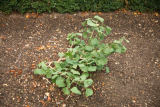
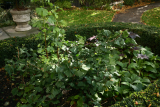
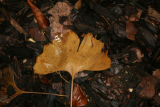

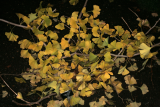
.JPG)
.JPG)
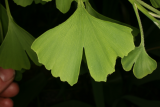
.JPG)
.JPG)
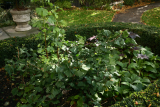
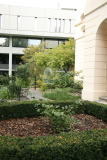
.JPG)
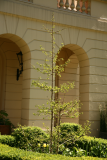
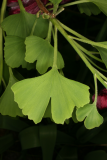
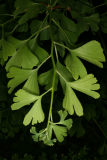
.JPG)